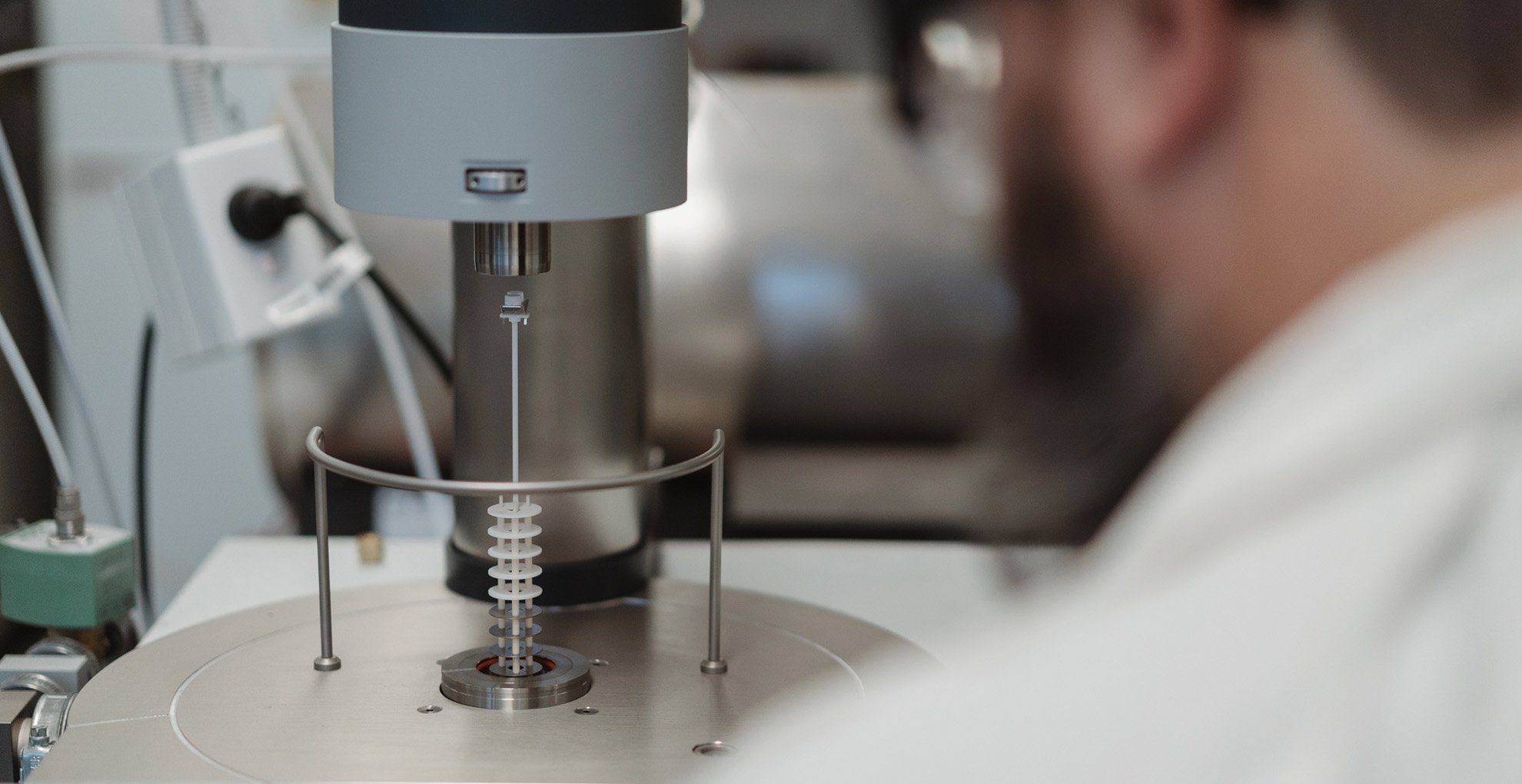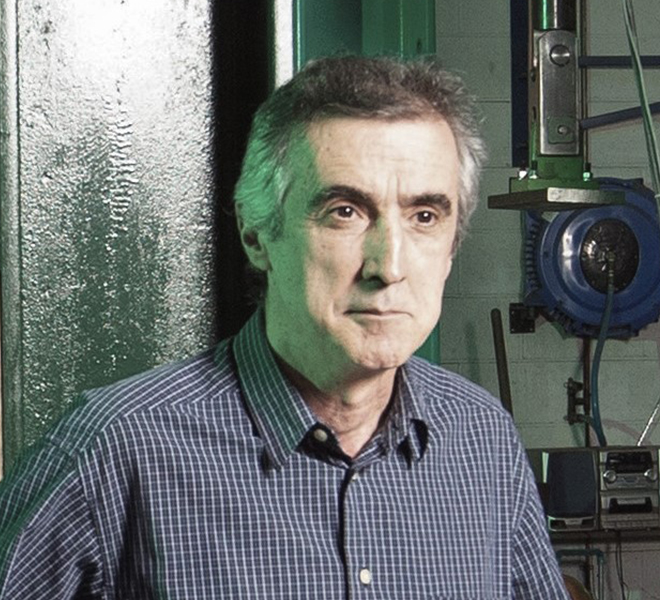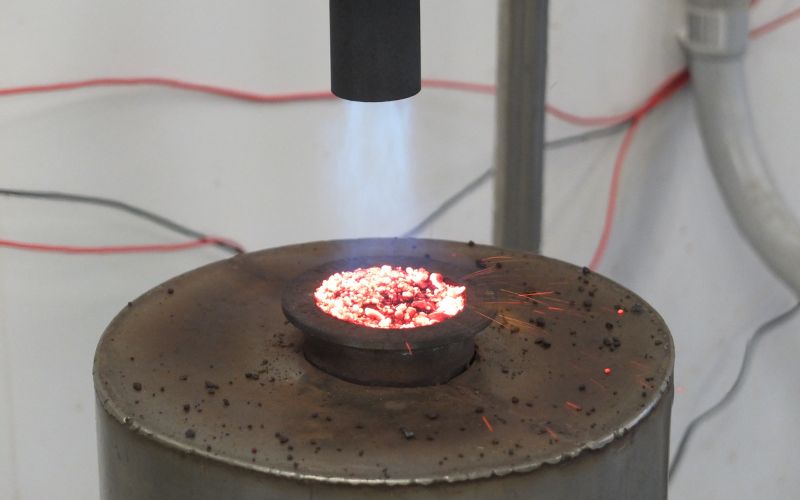The future of Australian steel innovation

We sat down with Paul Zulli, Director at the ARC Research Hub for Australian Steel Innovation (the 'Hub'), to discuss how the Hub covers the entire steel value chain, and what motivates him to continue seeking new solutions that are helping make the industry more sustainable.
The Hub brings together major steel manufacturers, innovative SMEs and peak industry bodies with nine Australian universities. Based at the University of Wollongong, the Hub is a strong consortium to effectively progress steel innovation in Australia and to facilitate the industry’s transformation towards a resilient, environmentally sustainable and economically competitive position across the entire steel supply chain (Steel Research Hub).
Paul (pictured below) is also a keynote speaker at AusIMM's upcoming Iron Ore Conference in Perth this September.

As director of the Steel Research Hub, can you share more about its role and the research work underway to make the steel supply chain more sustainable?
The Hub provides an efficient means of undertaking research for the Australian steel industry. While a part of our role is to investigate environmentally sustainable issues, our work covers far more than that. ‘Sustainability’ means being more resilient through the cycles of the iron ore and steel industries. So, for the Hub, this means helping to transform the steel industry from a cost-based competition approach to a more sustainable, competitive position based on the creation of new, higher value-added products and technologically advanced manufacturing processes. Our role is to undertake research that will help the Australian steel industry become more competitive.
We currently have approximately 40 projects to deliver within the next five years. Many projects require a multidisciplinary approach, with talented academics working together with skilled industry practitioners. Projects involve chemists, physicists, materials engineers, mechanical engineers, structural engineers, mathematicians and computer scientists. But supporting all this work is industry participation.
Through our research, the objective is to continue to help identify the higher value, next-generation end-user products the Australian steel industry delivers to the market; the opportunities to advance current and future manufacturing processes; and to generate a critical mass of skills and expertise in Australia that will allow the industry to overcome future challenges and issues.
Are the ARC Hub projects across the mining value chain?
Yes, the chain essentially starts from the raw materials and goes all the way through to the finished product. That's what we cover. Mining is the very front end of the work we do. We have projects that address questions like ‘Does it make sense to use iron concentrates in making sinter’. Then we have projects addressing product-related questions such as ‘How do we make coated steel products more durable’?
So the Steel Research Hub programs cover the breadth of the supply chain. One of the programs deals with what I call ‘enabling technology’, covering things like automation, machine learning, and sensing; these are the technologies that permeate across the whole value chain.
A key part of your role at the Hub is to engage stakeholders across industry to progress innovation. What are the key benefits of bridging the gap between academic research and innovative industrial solutions? Are we getting this right or could we do it better?
Yes, I think we could do it better, but are we on the right path? I think so. About a decade ago, hubs and training centres were considered and then implemented by the federal government, following advice from academies such as ATSE (Australian Academy of Technological Sciences and Engineering). At the time, Australian academics were really good at undertaking research and writing papers, but in terms of translating the research into value-add for the industry and businesses, that wasn't so good. By contrast, academics in Europe and other places were very good at interacting with industry, whereas in Australia, out of the 30 or so OECD (Organisation for Economic Co-operation and Development) countries, we were lowly ranked.
So now – and I will boast a little bit – I believe our Steel Research Hub has brought together the best of Australian academics, with the best of Australian steelmakers, and sometimes, iron ore practitioners. It is through this sort of union and engagement that we’re able to solve problems that actually are not solvable independently.
For instance, an academic could go away and come up with a brilliant theory – but it may have nothing to do with the practical process or problem. Meanwhile, an industry engineer on their own mightn’t be able to solve the problem, but together with some theoretical expertise from an academic, they might. So, the Hub is fundamentally about bringing folk together to try and solve challenging strategic issues.
Can we do more? Yes, we can. We're in our second Hub now. Our first Hub brought us to a certain level of cooperation and engagement. It helped solve a number of technical issues. This current Hub will springboard us to another level, not just in terms of industry outputs and research outcomes, but also engagement. There are professional relationships that have been developed in these hubs that hopefully will endure.

Research underway at the Hub.
With more than 30 years of technical and management experience across many aspects of the steel and ferrous minerals industries, what changes have you seen throughout your career, and do you have any predictions for the future?
The thing that I've noticed over the 30+ years is the tremendous improvements in efficiency across our work environment, particularly time efficiency.
On a personal level, I can still remember using a slide rule, log tables, magnetic tapes, punch cards and this sort of thing, and it used to take me ages as a young engineer to do various calculations. Today, engineers make those same calculations in a ‘millisecond’ using a computing device, so that efficiency is really something I appreciate. I like to get on with things!
From a steel plant perspective, there are no longer inefficient processes in use, for example, the open hearth furnace for steelmaking. We're using much more efficient basic oxygen furnaces. I can still remember trying to help operate one of these open hearth furnaces, which took about 3 or 4 hours to make a batch of steel. Within virtually half an hour or so, the basic oxygen furnace can do the same thing.
In terms of the future, there are probably two reflections. One is that the workforce is going to be more technically agile and smarter. Digital transformation is going to help with that. There'll be less manual activities.
The other thing is that this workforce will work in organisations that are much more attuned to the triple bottom line –not just the economics, but the social and environmental aspects as well.
What message are you hoping to share with Iron Ore Conference 2023 delegates, particularly with regards to the conference theme ‘transitioning to a green future’?
From a helicopter viewpoint, it is that the issue of sustainability, as it relates to environment, can't be solved by one single sector. In a very simplistic way, if you think about it, it's going to involve energy – but what form of energy? What form of renewable materials can be used by the steel supply chain, which the iron ore industry is part of?
We can't solve these issues independently; we've got to try and solve these together. An example of that is infrastructure. How can you address the issue of infrastructure if you do not have control of it? Solutions will require a multi-sector approach. So if the steel supply chain is happy to accept and use, let's say, renewable hydrogen or renewable electricity, well, how will that electricity, or that hydrogen, be transferred and supplied to the industry? So it’s that sort of helicopter view that I’ll be covering.
More specifically, the message that our domestic steel industry is unique. It's not large, but it's not small either. So the technological solutions for decarbonisation in Australia are going to be different to the technological solutions elsewhere in the world. It will be bespoke technological solutions that I expect we’ll be looking for.
Another specific aspect I’m hoping to cover is: are there ways of recycling carbon? And the answer is, yes. Are there smarter ways for recycling and reusing carbon? Yes, and for example the use of renewable biomass materials, which I think may be a lower emissions solution for Australian steelmakers.
What motivates you to champion value-adding sustainable outcomes for the steel sector?
From a professional perspective, the short answer is that I find the industry fascinating. I feel very privileged to have worked in the steel sector.
From a societal perspective, what I find captivating is that steel products are so pervasive. We forget that steel is all around us: in concrete, in cars, structures and bridges as well. It's so pervasive and yet you tend to forget about it even though around 3 to maybe 4 million tonnes of steel are used across our Australian communities. So that's one aspect that motivates me - the value-add of steel. I also happily advocate the industry’s continuing and beneficial commitment to its workforce and the communities and region it operates in.
The evolving environmental lens makes the industry’s future operations and product developments even more interesting. For example, if end users truly require low carbon emission products, then how do we do that? This is very challenging. So, finally, from a young person's perspective – young engineers, scientists, professionals in the industry, it's an exciting time. I'm looking forward to seeing the younger people provide their perspectives and solutions in this space.
What are you looking forward to most about the upcoming conference?
Two things I am looking forward to: catching up some with some former colleagues who immigrated to the West from the East Coast. And the second is actually just to be able to present the things I've talked about above, including the bespoke technological solutions.
Hopefully, through some of the information that comes out of the iron ore conference as a whole will help advise governments, because I think governments are going to have to play a significant role in some of the things that we've talked about regarding infrastructure and low emission steelmaking.